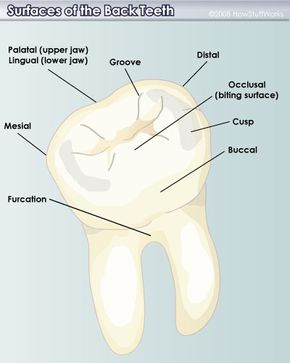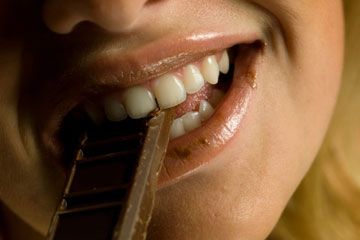Types of Teeth
Adults typically have 32 teeth: four incisors, four canines, eight premolars, 12 molars and four wisdom. Since there are multiple teeth in each group, each individual tooth needs its own designation. There are dozens of methods for labeling teeth in use, but the three most popular are the Universal Numbering System, the Palmer Notation Numbering System and the FDI (Fédération Dentaire Internationale) World Dental Federation Notation.
In the United States, most dentists use the Universal Numbering System. In this system, each of the 32 adult teeth is assigned a number. Number one is the upper-right third molar, while number 32 is the lower-right third molar. The 20 deciduous, or baby, teeth are designated by the letters A through K or the number-letter combination of 1d through 20d.
Advertisement
Some teeth, like molars, have multiple surfaces. Each of these surfaces has a name. The center of the tooth is the biting surface, known as the occlusal. This surface has two elements: the cusps, or raised parts, and the grooves, or indentions. The mesial surface of the tooth is toward the front of the mouth, while the distal is toward the back. The side toward the inside of the mouth is called the palatal surface on the upper jaw and the lingual on the lower jaw. The tooth surface facing the cheek is the buccal. So if you get a filling on the distal of number 15, that means it's on the surface facing the back of the mouth on your upper second molar (or 12-year molar).
When you visit the dentist for a checkup, the dentist makes a notation about each tooth to show variations (e.g., chips), and dental work such as fillings, crowns and bridges. The dentist also includes observations about the health of your teeth, like receding gums or signs of periodontal disease. Most dental visits involve taking sets of X-rays, which can also show work not easily seen, like root canals.
In the next section, we'll look at how forensic dentists use these records to identify teeth.



